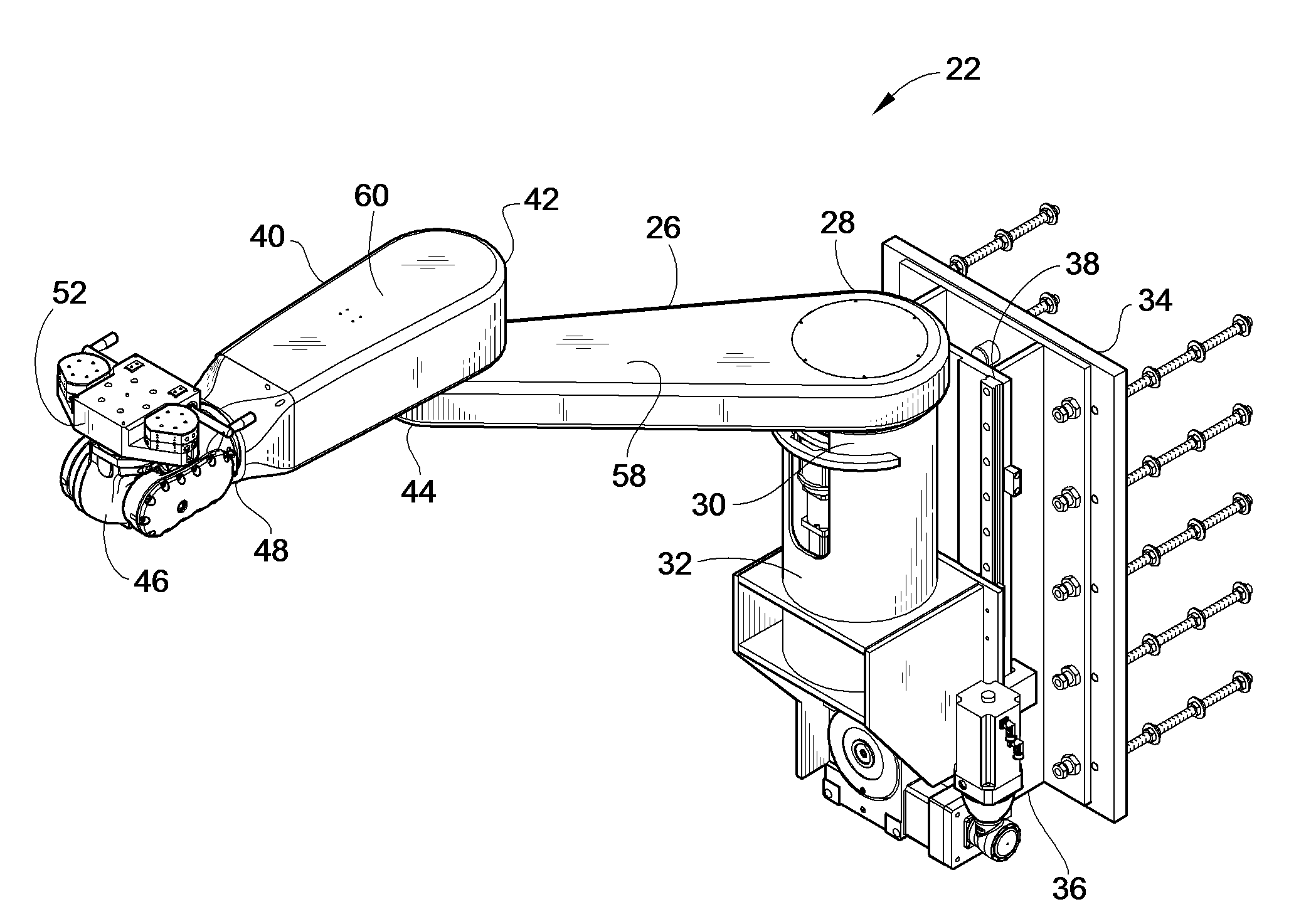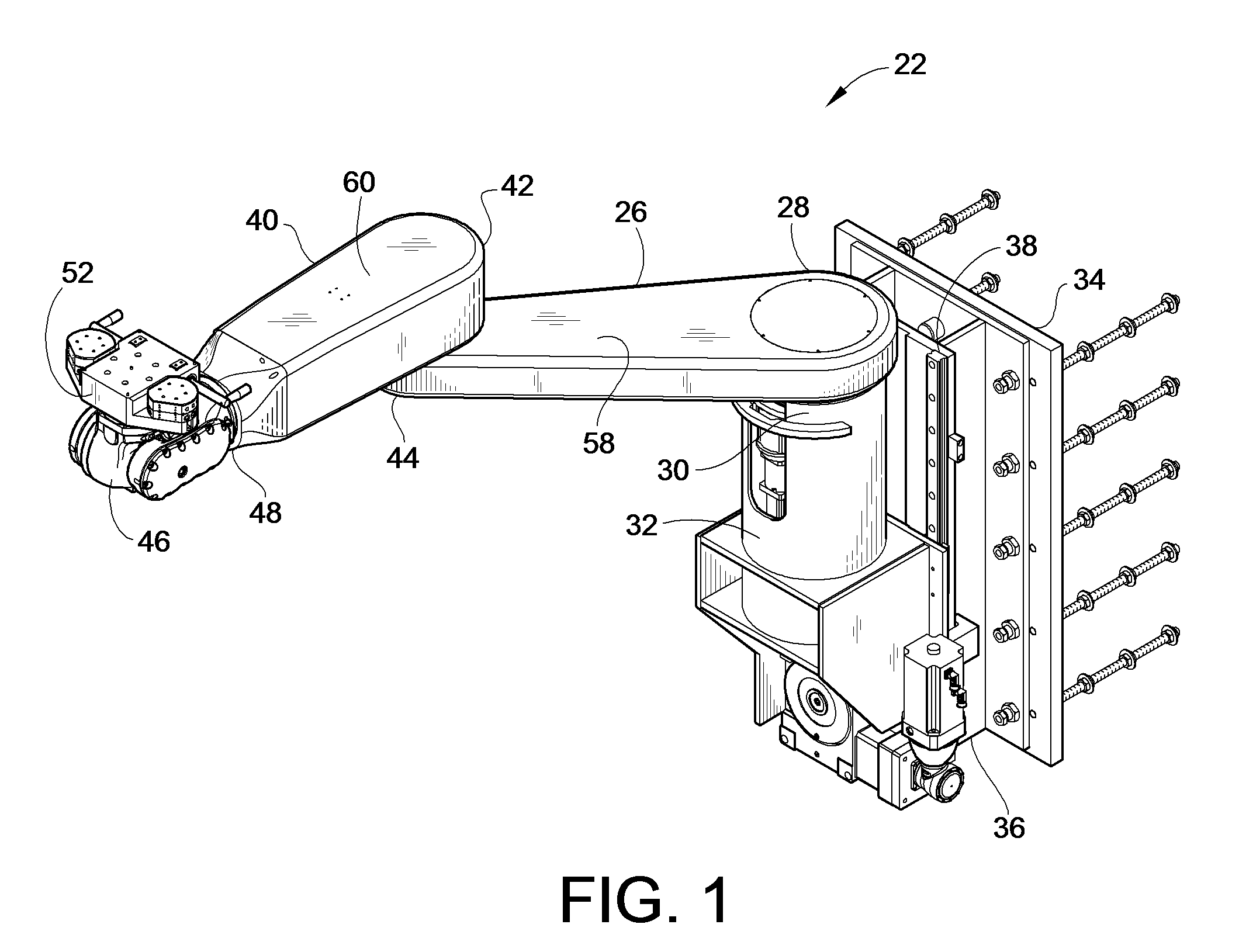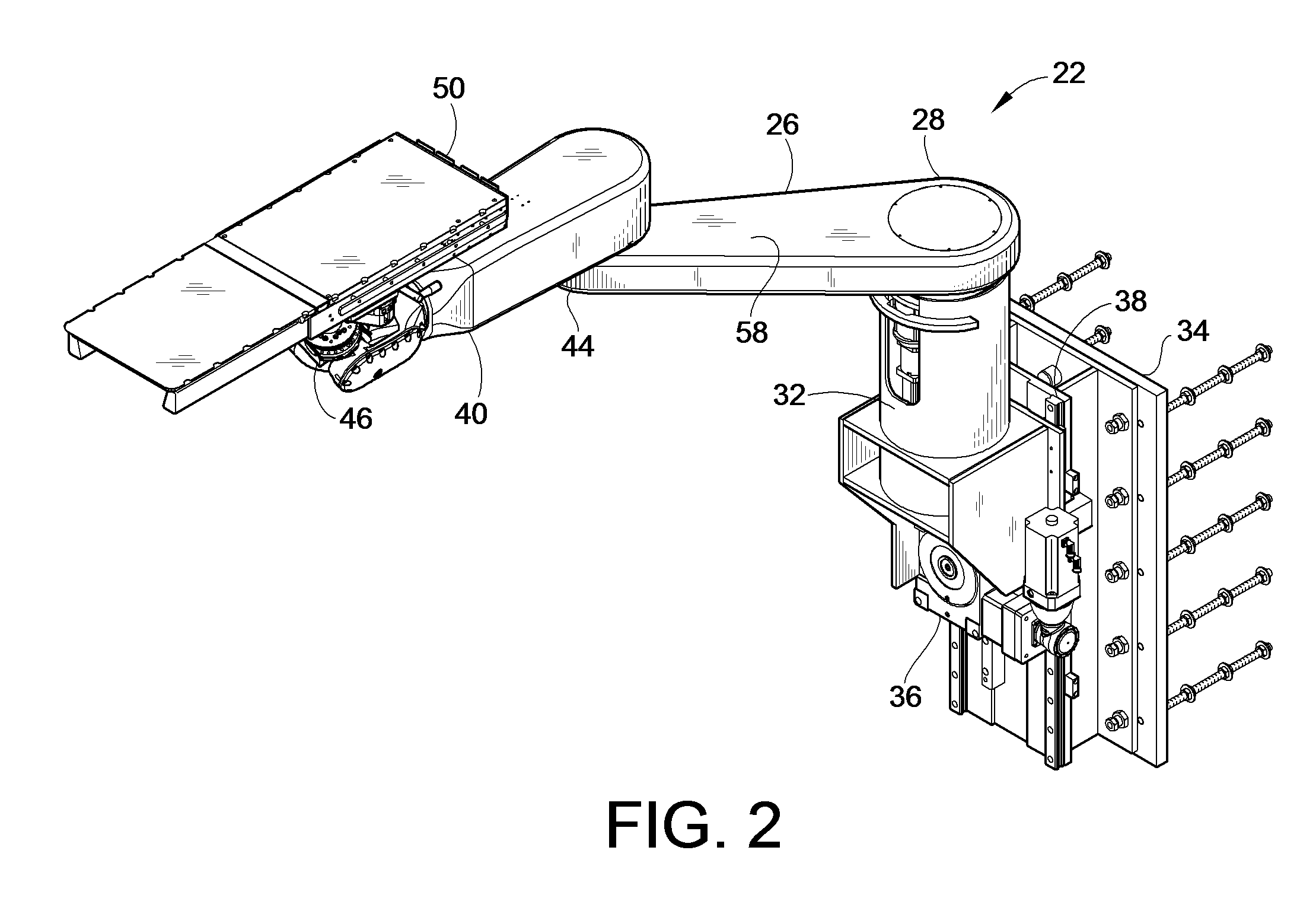Patient Positioner System
a patient positioner and patient technology, applied in the field of robotics, can solve the problems of limited patient positioning envelope, and inability to provide vertical movement in direct perpendicular path relative to the floor, so as to reduce the overall capital cost of treatment facilities, reduce operational costs, and increase patient throughput
- Summary
- Abstract
- Description
- Claims
- Application Information
AI Technical Summary
Benefits of technology
Problems solved by technology
Method used
Image
Examples
Embodiment Construction
[0040]The present invention will now be described in detail with reference to the particular application of a patient positioner system for use in positioning a human patient for radiotherapy treatment, such as in a proton beam treatment room or facility. It should be understood, however, the present invention may also have application in other types of treatments or other medical procedures, including diagnostic procedures and major surgery, for both humans and animals. Furthermore, it should be understood that features of the present invention may also find application entirely outside of the medical field, such as in an industrial, manufacturing, or scientific research setting.
[0041]A complete patient positioner system 20 in accordance with the present invention includes a robot 22 (See FIG. 1) and a control system 24 (See FIG. 7) therefore. Unless otherwise described herein, conventional robot parts, assembly methods, hardware, software, safety and control circuitry as are known...
PUM
 Login to View More
Login to View More Abstract
Description
Claims
Application Information
 Login to View More
Login to View More - R&D
- Intellectual Property
- Life Sciences
- Materials
- Tech Scout
- Unparalleled Data Quality
- Higher Quality Content
- 60% Fewer Hallucinations
Browse by: Latest US Patents, China's latest patents, Technical Efficacy Thesaurus, Application Domain, Technology Topic, Popular Technical Reports.
© 2025 PatSnap. All rights reserved.Legal|Privacy policy|Modern Slavery Act Transparency Statement|Sitemap|About US| Contact US: help@patsnap.com



